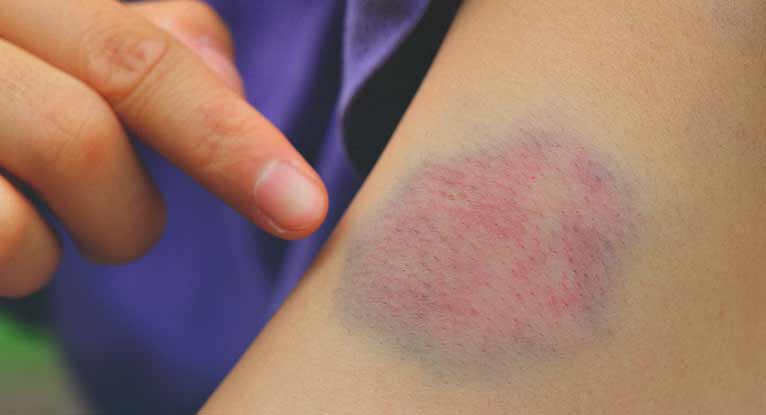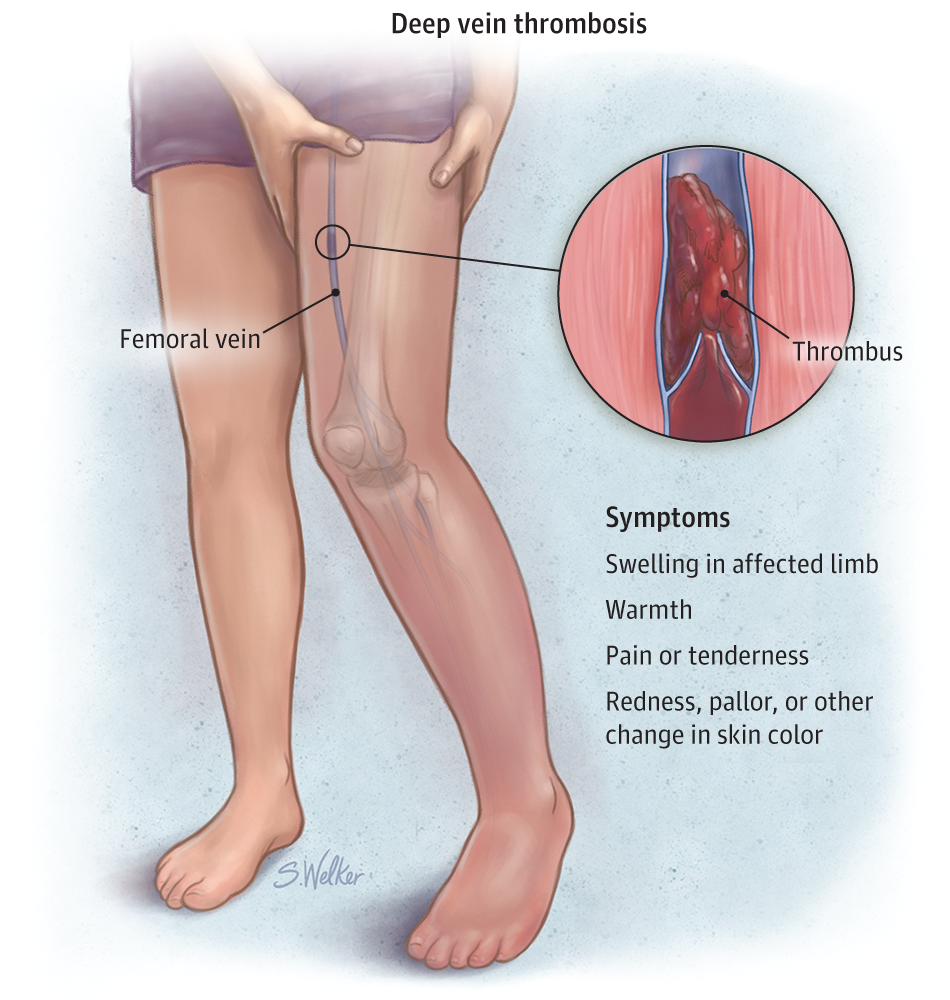This is what causes the purplish-blue color. A blood clot behind the knee is a type of venous thromboembolism.

Like bruises they form when a blood vessel is injured by trauma from blunt force a cut or excess lipids in the blood.

Blood clot bruise. We all develop both bruises and blood clots but some people are more likely to have dangerous blood clots. Using birth control pills or hormone replacement therapy. Sometimes the area of the bruise spreads down the body in the direction of gravity.
Increased pain when toes are pointed up towards the head says Dreher. A blood clot usually does not have bruising and may be associated with a positive Homans sign. The severity of symptoms also varies depending on their cause.
A swollen leg or arm is one of the most common signs of a DVT. Blood clots can also form in veins that are closer to the skin known as superficial venous thrombosis and cause a syndrome called superficial thrombophlebitis. When youre injured cell.
Recovering from recent surgery. Bruises and blood clots are both ways in which the body heals itself. Blood leaks into tissues under the skin and causes the black-and-blue color.
It is a serious condition that can lead to life-threatening complications such as a. When a bruise develops ruptured blood vessels cause blood to leak into tissues under the skin. The signs and symptoms of a blood clot vary with the location of the clotwhether its in a vein or an arteryand its size.
Another blood clotting condition is thrombocytopenia which is when your blood platelet count is so low that the blood is not efficiently clotting when it needs to. As bruises contusions heal usually within 2 to 4 weeks they often turn colors including purplish black reddish blue or yellowish green. In order for the bruise to eventually heal and go away coagulation of the broken blood vessels among other healing processes need to take place.
A blood clot is a clump of blood that has formed in deeper tissue or within a blood vessel and is rarely visible. Blood clots are semisolid masses of blood. When a frail senior lives alone there is reason to.
When in doubt call your doctor A harmless bruise from trauma may be very tender or sore to the touch and as the bruise fades the tenderness also fades. In rare cases the number of. The definition of a contusion is a bruise which occurs when blood vessels are damaged or broken as the result of an injury.
A bruise often forms while the. Both bruises and blood clots often result from damage to blood vessels. However bruises or blood clots can signal more serious conditions.
Bruises generally heal on their own while the formation of small blood clots due to cuts or injury is a normal part of the bodys healing process. Although bruises do require the clotting of blood to heal properly its not the same blood clot you may be thinking of. Blood clots can block the healthy flow of blood in the legs and blood can pool.
If you just find bruising on your body whether its your arms your legs or anything thats almost never a blood clot The most common symptoms of blood clots and DVT are swelling and pain says Jacobowitz so a bruise unaccompanied by either shouldnt be cause for concern. Both can result from damage to blood vessels due to an injury. A hematoma is a collection of blood outside a blood vessel and there are various type that range from minor in the skin for instance to life threatening in the brain.
Age over 60 Being overweight. Some of the risk factors include. However blood clots in deep tissues may require further.
They can include swelling skin tenderness and warmth and even chest pain shortness of breath and dizziness. A contusion is a type of hematoma.


